
Associated Equipment Company (AEC) was a British vehicle manufacturer that built buses, motorcoaches and trucks from 1912 until 1979. The name Associated Equipment Company was hardly ever used; instead, it traded under the AEC and ACLO brands. During World War One, AEC was the most prolific British lorry manufacturer, after building London's buses before the war.

Seddon Atkinson Vehicles Limited, was a manufacturer of large goods vehicles based in Oldham, Greater Manchester, England, was formed after the acquisition in 1970 of Atkinson Vehicles Limited of Preston by Seddon Diesel Vehicles Limited of Oldham. In 1974, the firm was acquired by International Harvester, which sold it in March 1984 to the Spanish group Enasa which made it a subsidiary of Pegaso. In 1990, it became part of Iveco which used the brand for various types of specialised vehicles in the United Kingdom. The range of models produced included EuroMover, Pacer and Strato, which are aimed at refuse collection, recycling and construction operators.
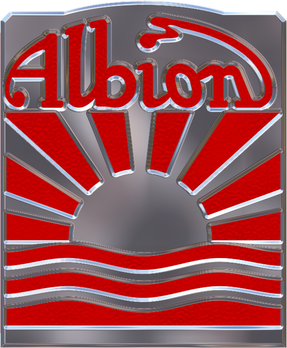
Albion Motors was a Scottish automobile and commercial vehicle manufacturer.
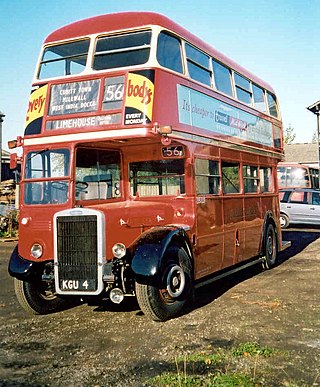
The Leyland Titan was a forward-control chassis with a front-mounted engine designed to carry double-decker bus bodywork. It was built mainly for the United Kingdom market between 1927 and 1942, and between 1945 and 1969.

Duple Coachbuilders was a coach and bus bodybuilder in England from 1919 until 1989.

Guy Motors was a Wolverhampton-based vehicle manufacturer that produced cars, lorries, buses and trolleybuses. The company was founded by Sydney S. Guy (1885–1971) who was born in Kings Heath, Birmingham. Guy Motors operated out of its Fallings Park factory from 1914 to 1982, playing an important role in the development of the British motor industry.

The Leyland Atlantean is a predominantly double-decker bus chassis manufactured by Leyland Motors between 1958 and 1986. Only 17 Atlantean chassis were bodied as single deck from new.

The Leyland National is an integrally-constructed British step-floor single-decker bus manufactured in large quantities between 1972 and 1985. It was developed as a joint project between two UK nationalised industries – the National Bus Company and British Leyland. Buses were constructed at a specially built factory at the Lillyhall Industrial Estate, Workington. Styling was carried out by the Italian vehicle stylist Giovanni Michelotti, previously commissioned by both Triumph and Scammell lorries.
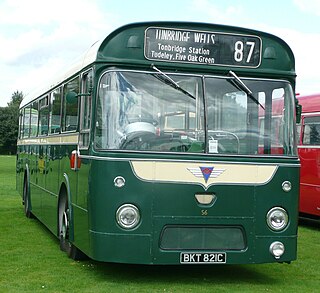
The AEC Reliance was a mid-underfloor mounted engined single-decker bus and coach chassis manufactured by AEC between 1953 and 1979. The name had previously been used between 1928 and 1931 for another single-decker bus chassis.

The Leyland Tiger Cub was a lightweight underfloor-engined chassis manufactured by Leyland between 1952 and 1970.
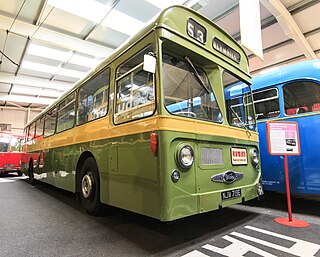
The Daimler Roadliner was a single-decker bus and coach chassis built by Daimler between 1962 and 1972. Notoriously unreliable, it topped the 1993 poll by readers of Classic Bus as the worst bus type ever, beating the Guy Wulfrunian into second place. It was very technologically advanced, offering step-free access some 20 years before other buses; as a coach, it was felt by industry commentators to be in advance of contemporary UK designs.

The Daimler Freeline was an underfloor-engined bus chassis built by Daimler between 1951 and 1964. It was a very poor seller in the UK market for an underfloor-engined bus and coach chassis, but became a substantial export success.
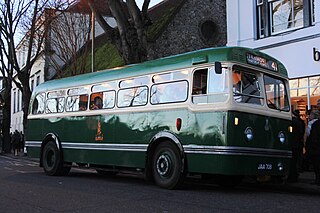
The Leyland-MCW Olympic was an underfloor-engined single-deck bus manufactured for at least eighteen countries from 1949 to 1971. 3,564 Olympics were built at four factories from 1949 to 1971, with 1,299 Olympics (36%) built as right hand drive and 2,265 (64%) as left hand drive. It was a very durable heavy-duty bus which ran in arduous conditions for longer periods than ever envisaged by its designers.

The Leyland Tiger was a heavyweight half-cab single-decker bus and coach chassis built by Leyland Motors between 1927 and 1968, except the period of World War II.
H. V. Burlingham was a British coachbuilding business based in Blackpool, Lancashire from 1928 until 1960 when they were taken over by London-based rivals Duple Motor Bodies. Duple initially renamed Burlingham as Duple (Northern) but in 1969 they closed their Hendon factory and concentrated production in Blackpool. Duple coach bodies were built in the former Burlingham premises until Duple itself was liquidated in 1989.

The Leyland Royal Tiger Worldmaster, sometimes simply known as the Leyland Worldmaster, was a mid-underfloor-engined single-decker bus or single-decker coach chassis manufactured by Leyland between 1954 and 1979.

The Renault PR100 was a French full-size step-entrance single-decker bus chassis built and marketed originally by Berliet from 1971, and sold as a Renault following the merging of Berliet into Renault Véhicules Industriels.

The Leyland Royal Tiger PSU was an underfloor-engined bus and coach chassis manufactured by Leyland between 1950 and 1954.
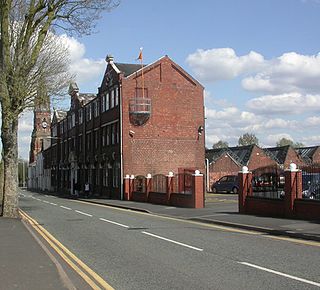
Sunbeam Commercial Vehicles was a commercial vehicle manufacturing offshoot of the Wolverhampton based Sunbeam Motor Car Company when it was a subsidiary of S T D Motors Limited. Sunbeam had always made ambulances on modified Sunbeam car chassis. S T D Motors chose to enter the large commercial vehicle market in the late 1920s, and once established they made petrol and diesel buses and electrically powered trolleybuses and milk floats. Commercial Vehicles became a separate department of Sunbeam in 1931.


















